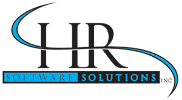Individual employee growth is crucial for any organization. However, businesses will often vary on how they track such progress and how managers will encourage team members to become stronger. When HR teams are not bogged down with piles of paperwork, they can have more time to work with employees one-on-one, and ensure that the right opportunities are available to them.
With current HR software solutions, this will be achieved much easier. Not all businesses have chosen to take such a route though. Microsoft is one example of a company that implemented “stack ranking,” where co-workers are compared against one another and rated on a 4.0 scale. Four is the equivalent of an above-average worker, while a 3.0 was below-average.
Former Microsoft employee David Auerbach explained in a recent Slate article why the system failed. According to him, co-workers were pitted against one another, and employees attempted to beat the system by ensuring that their team members failed—often by whatever means possible.
“The stack rank was a zero-sum game—one person could only excel by the amount that others were penalized,” Auerbach wrote. “And it was applied at every level of the organization. Even if you were in a group of three high performers, it was very likely that one of you would be graded Above Average, one Average, and one Below Average.”
Additionally, there was an incentive to join low-quality groups. That way, individual employees could be “the star” and then coast above their peers. Auerbach speculated that upper management might have hoped that this practice would encourage high performers to lift up the rest, but it was simply not the case.
When HR employees have access to human resources software solutions, it can help them give team members the right amount of attention and even see which departments are suffering. From there, businesses will be able to grow on all levels.

